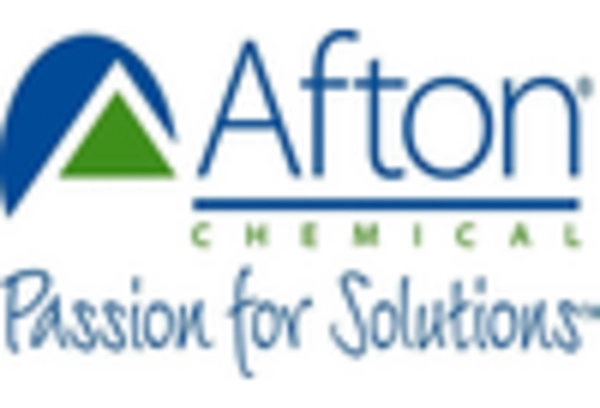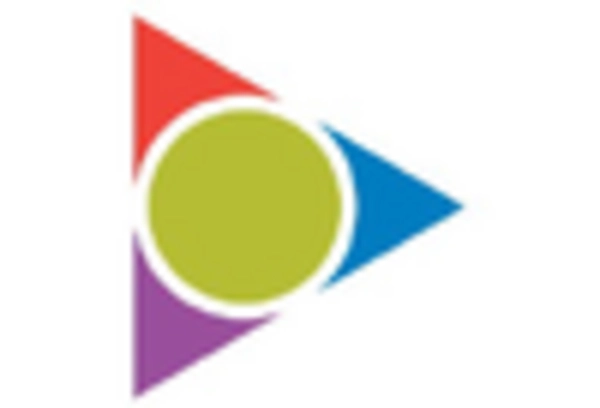Increased Vehicle Ownership
The fuel additive market in North America is likely to benefit from the rising trend of vehicle ownership. As more individuals acquire vehicles, the demand for fuel and, consequently, fuel additives is expected to increase. This trend is particularly pronounced among younger demographics who prioritize vehicle performance and efficiency. The market for fuel additives is projected to expand, with estimates suggesting a growth rate of around 4% annually. This increase in vehicle ownership not only drives fuel consumption but also highlights the necessity for additives that enhance fuel efficiency and reduce emissions, thereby supporting the fuel additive market.
Rising Fuel Efficiency Standards
The fuel additive market in North America is experiencing a notable shift due to the implementation of stringent fuel efficiency standards. Regulatory bodies are mandating improvements in fuel economy, which compels manufacturers to innovate and enhance their products. Fuel additives play a crucial role in optimizing engine performance and reducing emissions, thereby aligning with these standards. As a result, the demand for high-quality fuel additives is projected to increase, with the market potentially reaching a valuation of $3 billion by 2026. This trend indicates a growing recognition of the importance of fuel additives in achieving compliance with environmental regulations, thus driving the fuel additive market forward.
Consumer Awareness of Fuel Quality
In North America, there is a growing consumer awareness regarding the quality of fuel and its impact on vehicle performance. This heightened awareness is driving the fuel additive market as consumers seek products that enhance fuel quality and engine longevity. As vehicles become more sophisticated, consumers are increasingly inclined to invest in fuel additives that promise better performance and efficiency. Market data suggests that the demand for fuel additives could grow by approximately 5% annually, reflecting a shift in consumer behavior towards premium fuel products. This trend underscores the importance of educating consumers about the benefits of fuel additives, thereby propelling the market forward.
Environmental Concerns and Emission Regulations
Environmental concerns are increasingly shaping the fuel additive market in North America. As awareness of climate change and air quality issues grows, regulatory agencies are implementing stricter emission regulations. Fuel additives that help reduce harmful emissions are becoming essential for compliance. The market is responding to this demand, with estimates indicating a potential growth of 6% in the sector as manufacturers develop products that meet these new standards. This trend highlights the critical role of fuel additives in addressing environmental challenges, thereby driving innovation and growth within the fuel additive market.
Technological Innovations in Additive Formulation
Technological advancements in the formulation of fuel additives are significantly influencing the fuel additive market in North America. Innovations such as the development of multifunctional additives that improve combustion efficiency and reduce deposits are gaining traction. These advancements are likely to enhance the performance of fuels, making them more appealing to consumers and fleet operators alike. The market is expected to see a surge in demand for these innovative products, with projections indicating a potential market size increase of $500 million by 2027. This trend suggests that ongoing research and development in additive technology will play a pivotal role in shaping the future of the fuel additive market.


















Leave a Comment